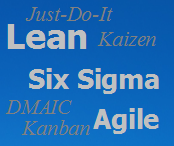CPM Project Risk Analysis by Simulation
Project risk analysis has always been as challenging and complicated as valuable and mission-critical. The information a team gathers while analyzing risks is valuable as long as it helps the team perceive true risk exposure and reduce the key drivers. The impact of uncertainties and risk events can jeopardize project schedule and push critical path completion dates out of alignment with project goals. A simulation-driven risk analysis in critical path management (CPM) gives the team a true sense of exposure. Risk models let ensure realistic CPM scheduling.
















